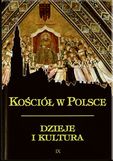REORGANIZACJA KOŚCIOŁA KATOLICKIEGO W PRUSACH NA PODSTAWIE BULLI „DE SALUTE ANIMARUM”
The Reorganization of the Church in Prussia Based on the Bull „De salute animarum”
Author(s): Andrzej KopiczkoSubject(s): History
Published by: Katolicki Uniwersytet Lubelski Jana Pawła II - Wydział Teologii
Keywords: Church; Prussia; „De salute animarum”; papal bull; organization
Summary/Abstract: After annexations by Prussia in the eighteenth century, the lands inhabited by Catholics required new church organization legislation. The main difficulty was caused by the Prussian state, which was Protestant in nature and reluctantly set towards the Catholic faith. Also, the Holy See applied the principle of not signing concordats with the infidel authorities. Despite this, after the Congress of Vienna, they entered into discussions, culminating in the announcement in 1821 of the Bull De salute animarum. Under its provisions, two metropolises were established in the Prussian nation: Cologne (Rhine-Westphalia with the bishoprics in Münster, Paderborn, and Trier) and Gniezno- -Poznan for lands taken away from Poland (with the Chelm bishopric). The bishopric of Aachen, as established by Napoleon, was also abolished, and Wroclaw’s and Warmia’s bishoprics were covered by exemption. Poznan’s bishopric was raised to the rank of archbishopric and in the person of one archbishop it was jointed to the Gniezno bishopric, but it maintained organizational independence. A reduction in the composition of the cathedral chapters was made, but these were left – at least formally – the right to choose their ordinary. The Prussian government also undertook to finance the central offices and institutions mentioned in the bull, treating them as a form of compensation for the properties taken away from the church. This paper presents the genesis of the Bull, its detailed resolutions, and the consequences were identified. These resulted primarily from state control over the Church and interference in personnel, education and property. This later led to two major conflicts – the dispute about mixed marriages and Kulturkampf. Despite these difficulties, the bull’s resolutions remained in force in Prussia until the Concordat of 1929, and in the whole of Germany formally until 1933, on Polish territory – until the Concordat of 1925, but also many of the provisions lasted in parts of Germany until 1945.
Journal: Kościół w Polsce. Dzieje i kultura
- Issue Year: 2013
- Issue No: 12
- Page Range: 65-85
- Page Count: 21
- Language: Polish

